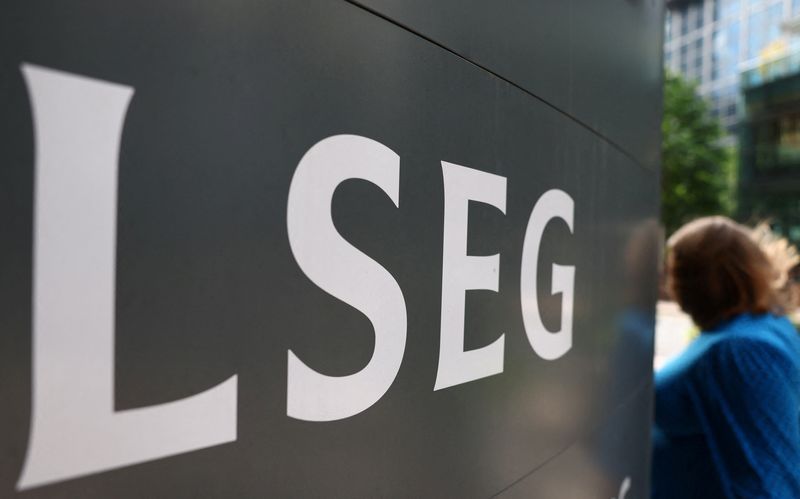By Danilo Masoni
MILAN (Reuters) - Growing demand for megacap stocks that tap global secular growth trends has catapulted European shares to fresh highs, although some say their star may wane as investors seek value elsewhere.
Obesity drug superstar Novo Nordisk (NYSE:NVO), AI-darling ASML (AS:ASML) and luxury giant LVMH have been pivotal in Europe's post-pandemic STOXX 600 ascent, just as smaller, less-liquid stocks have struggled to lure funds.
The 12%-26% gain in their shares so far this year has boosted their relative weighting yet further. Together, the megacaps now make up 12% of the $11 trillion index, compared to their 2.7% weighting a decade ago, LSEG Datastream data shows.
The rise in popularity of Europe's stock market leaders contrasts with underlying economic weakness. Germany is in recession and fund managers are wary of tariffs on European imports should Donald Trump become U.S. President again.
"While the European economy faces headwinds on several fronts... many of the largest stocks in the index are globally facing and benefit from far broader trends," said Lindsay (NYSE:LNN) James, strategist at British wealth manager Quilter in London.
The export-oriented nature of many European-listed companies has also helped shield local benchmarks from economic weakness, while rising military spending in the wake of Russia's invasion of Ukraine has lifted defence stocks.
Other standouts in Europe this year include sportscar Ferrari (NYSE:RACE) and Germany arms maker Rheinmetall.
The STOXX was last up 1% on Thursday, after surging as high as 495.81 points to breach the previous peak in January 2022, bringing year-to-date gains for the index to 3.6%.
Helped by continued U.S. economic strength, the latest uplift for European equities came after blockbuster numbers from chipmaker Nvidia (NASDAQ:NVDA) validated bets that Wall Street's artificial intelligence-driven rally has room to go.
That reverberated across markets in different geographies.
"The share rally is a global phenomenon, but Europe is part of it," said Samy Chaar, chief economist at Swiss private bank Lombard Odier in Geneva.
"When you think about the improvement in the growth picture ... it's not like we've got the situation last year with U.S. exceptionalism and the rest doing poorly. We are seeing a bottoming process everywhere," he added.
A survey on Thursday showed the downturn in euro zone business activity eased in February as the dominant services sector broke a six-month streak of contraction and offset a deterioration in manufacturing.
The STOXX 600 equal-weighted index has lagged the benchmark in recent years, another illustration of investor preference for larger stocks. The index is up barely 1% over the past three years, a 17 percentage point underperformance.
Some expect that concentration to ease, which could pose a risk for the more highly crowded megacaps.
"I would expect that rally to broaden ... and people may come out of the bigger cap stocks to fund that," said James Rutland, equities fund manager at Invesco.
"That's where I see the opportunity; when I look at tech or luxury, they still look quite elevated relative to history." Morgan Stanley says Novo Nordisk and ASML are the two most over-owned stocks in Europe by global funds. Aerospace and defence is the most crowded by sector, with allocations four times the benchmark.

Data from securities lending firm Hazeltree, however, show that investors betting on a drop in prices have favoured the shares in smaller companies to do so.
In 2023, stocks borrowed for shorting purposes were 11% for large caps, versus 39% for small firms.